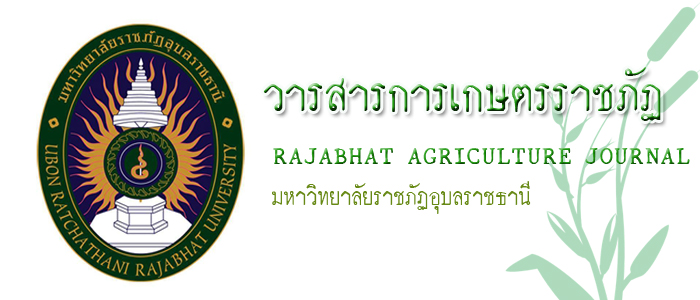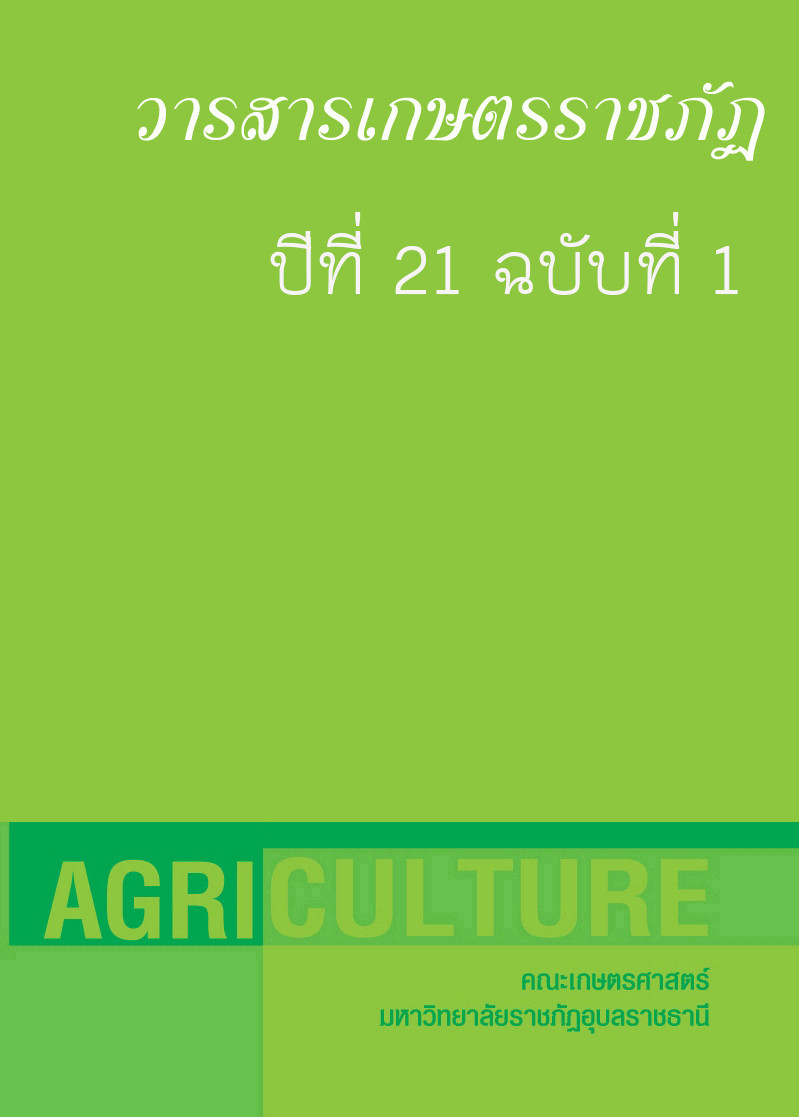
การอนุรักษ์ความหลากหลายข้าวพันธุ์พื้นเมืองตามภูมินิเวศสู่ความยั่งยืน อำเภอด่านซ้าย จังหวัดเลย

การอนุรักษ์ความหลากหลายข้าวพันธุ์พื้นเมืองตามภูมินิเวศสู่ความยั่งยืน อำเภอด่านซ้าย จังหวัดเลย
Conservation of Rice Landraces Genetic Varieties on Geographical Ecosystem for Sustainability in Dansai District, Loei Province
--------------------------------------------
โดย ประภาศรี เติมสายทอง และ สุวารีย์ ศรีปูณะ
ประเภท : บทความวิจัย
ปีที่ตีพิมพ์ : วารสารเกษตรราชภัฏ ปีที่ 15 ฉบับที่ 2
ผู้เข้าชม 0
วันที่ปรับปรุงข้อมูล : 2020-11-18 10:39:04
บทคัดย่อ
งานวิจัยสำรวจความหลากหลายข้าวพันธุ์พื้นเมือง จัดหมวดหมู่ข้าวพันธุ์พื้นเมืองตามภูมินิเวศ วิเคราะห์ลักษณะและคุณค่าภูมิปัญญาท้องถิ่นและเครือข่ายในการอนุรักษ์ข้าวพันธุ์พื้นเมือง หาแนวทางส่งเสริมการอนุรักษ์ข้าวพันธุ์พื้นเมืองสู่ความยั่งยืน ของอำเภอด่านซ้าย จังหวัดเลย ใช้วิธีการวิจัยเชิงปฏิบัติการแบบมีส่วนร่วม ใช้วิธีวิเคราะห์เชิงคุณภาพและเชิงปริมาณ เก็บข้อมูลจากปราชญ์ท้องถิ่น เกษตรกรผู้ปลูกข้าว ผู้นำชุมชน นักท่องเที่ยวและเยาวชน รวม 100 คน เครื่องมือที่ใช้วิจัย ได้แก่ แบบสัมภาษณ์และประเด็นการประชุมสนทนากลุ่ม แบบบันทึกการปฏิบัติการ แบบสอบถามความพึงพอใจ ผลการวิจัยพบว่า ข้าวพันธุ์พื้นเมืองในพื้นที่อำเภอด่านซ้าย เป็นข้าวไร่ 46 สายพันธุ์มากกว่าข้าวนา พันธุ์ข้าวไร่ที่นิยมปลูกมี 11 สายพันธุ์ ได้แก่ พันธุ์หางปลาไหล(ไร่) หางปลาไหลแดง หางปลาไหลขาว หอมเสงี่ยม พญาลืมแกง เล็บช้างดำ เล็บช้างแดง ข้าวเหนียวดำลืมผัว ข้าวเจ้าก่ำหอมหรือก่ำไร่ ข้าวซิวขาวเกลี้ยงหรือซิวขาวอ้าว ข้าวปลาจาด และข้าวนามี 2 สายพันธุ์ คือ พันธุ์อีเหลือง และหางปลาไหล(นา) พื้นที่ปลูกที่ได้ผลดีต้องสูงจากระดับน้ำทะเลปานกลางสูงกว่า 500 เมตร มีความลาดเอียงน้อย มีความชื้นสม่ำเสมอปานกลาง อุณหภูมิ 20-35 องศาเซลเซียส ใช้วิธีการปลูกและเก็บผลผลิตแบบผสมระหว่างภูมิปัญญาดั้งเดิมกับวิธีการและเทคโนโลยีสมัยใหม่ มีเครือข่ายข้าวพันธุ์พื้นเมือง 2 รูปแบบ คือ แบบระบบเครือญาติ และแบบทางการที่มีหน่วยงานสนับสนุนการเรียนรู้ การแปรรูปและการจำหน่าย ควรได้มีการส่งเสริมการใช้ประโยชน์จากข้าวพันธุ์พื้นเมืองเพื่อสุขภาพและถ่ายทอดคุณค่าสู่คนรุ่นใหม่และนักท่องเที่ยวต่อไป คำสำคัญ: ข้าวพันธุ์พื้นเมือง ความหลากหลาย การอนุรักษ์ ภูมินิเวศ
